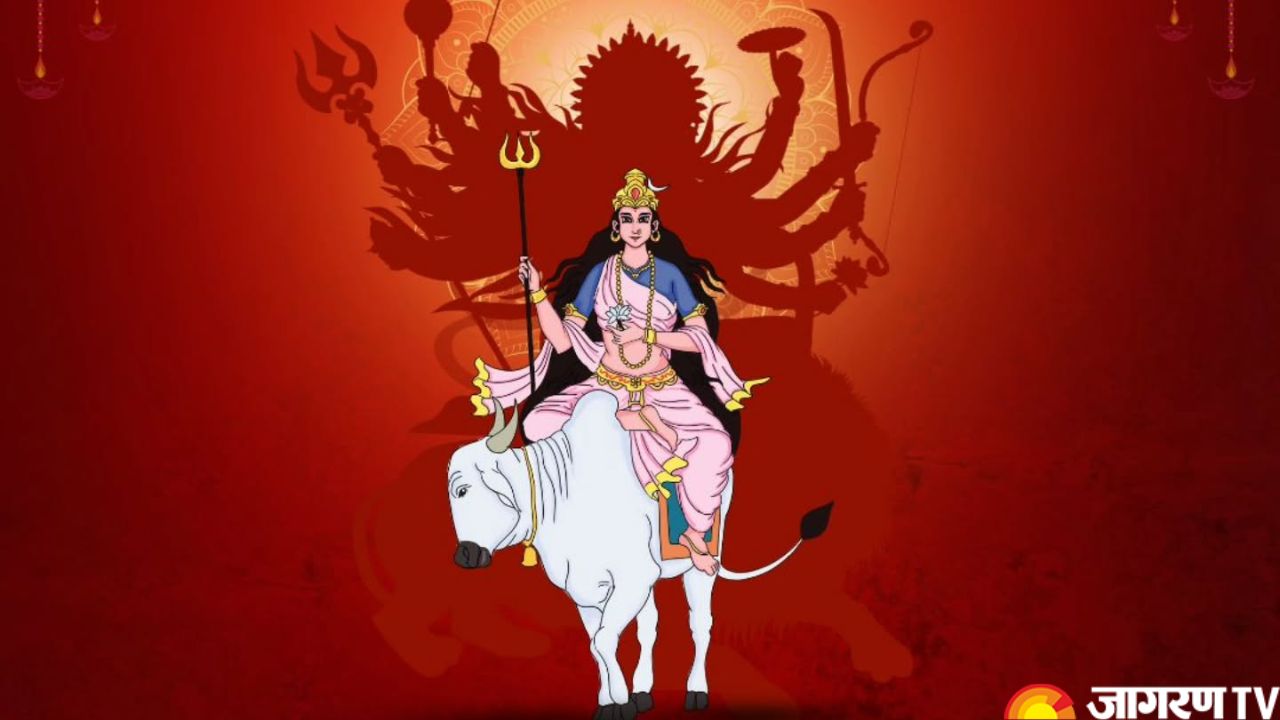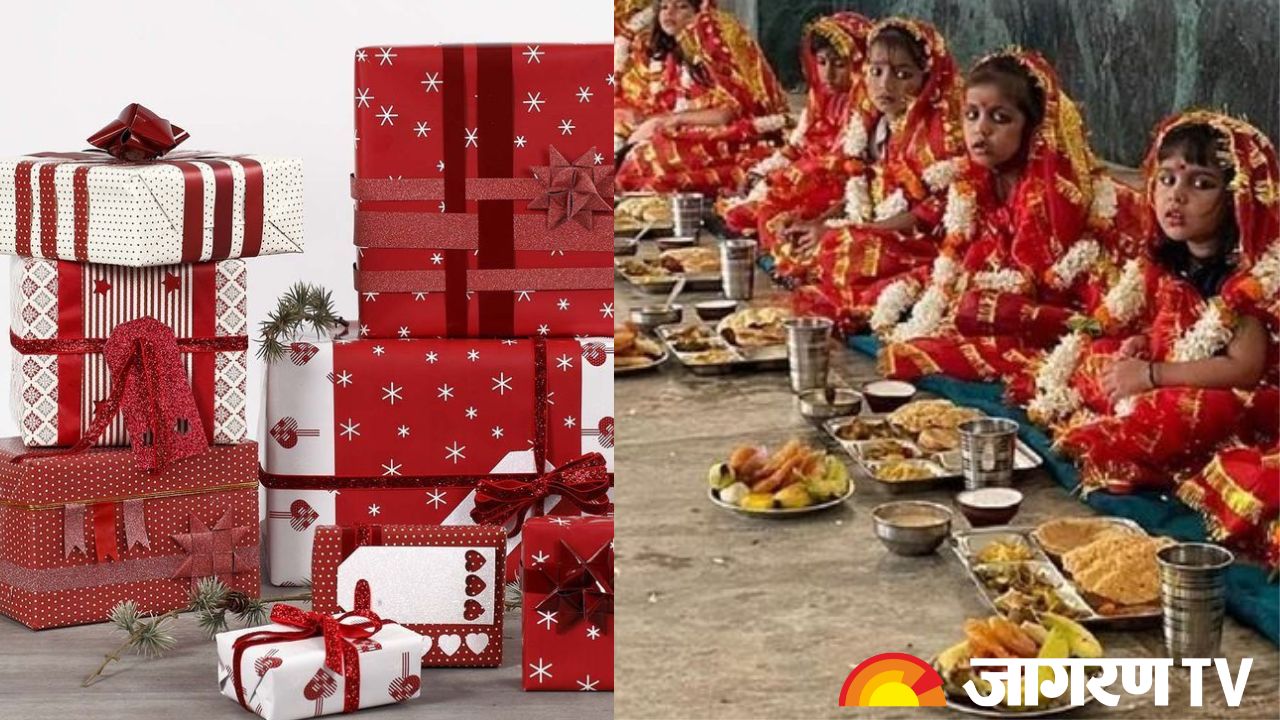Chaitra Navratri Day 1: Goddess Shailputri Significance, Colour, Offerings, and More

Chaitra Navratri Day 1: Chaitra Navratri is a nine-day Hindu celebration held in the month of Chaitra (March-April) to commemorate the beginning of the Hindu New Year. It is dedicated to the Goddess Durga and her nine celestial forms, known as Navadurga. Each day is associated with a different manifestation of the Goddess, with Day 1 being dedicated to Goddess Shailputri.
Navratri Day 1 Goddess Shailputri
Goddess Shailputri, also known as Parvati, is Maa Durga’s first appearance and the daughter of Himavan, the King of Mountains. The name “Shailputri” means “daughter of the mountains” (Shail means mountain, and Putri means daughter). She embodies purity, tranquillity, and strength.
Goddess Shailputri’s heavenly form depicts her riding a bull (Nandi) and carrying a trident (Trishul) in one hand and a lotus in the other. She is an incarnation of Goddess Sati, who reincarnated as Parvati after self-immolating in her previous life in response to an insult from her husband, Lord Shiva.
Significance of Goddess Shailputri
The worship of Goddess Shailputri on the first day of Navratri represents a new beginning, devotion, and spiritual awakening. She represents the root chakra (Muladhara), which symbolizes stability and strength. Devotees seek her blessings to get prosperity, good health, and a solid foundation in life. By worshipping her, one can achieve inner calm and spiritual consciousness, preparing the way for the rest of the Navratri festivities.
Colour of the Goddess Shailputri
Each day of Navratri is linked with a different colour, with Day 1 being Red, which is devoted to Goddess Shailputri. Red represents energy, force, and determination. Devotees dress in red and present red flowers while performing rituals and prayers to invoke her heavenly grace.
Rituals and Worship
On the first day of Chaitra Navratri, believers get up early, take a traditional bath, and set up a Kalash (holy pot) to represent prosperity and divine energy. They seek Goddess Shailputri’s blessings by chanting mantras, performing aarti, and offering flowers, fruits, and bhog (prasad). Some followers fast and eat satvik cuisine, avoiding onion, garlic, and non-vegetarian ingredients.
Related videos
-
Chaitra Purnima 2025 Date: कब है चैत्र पूर्णिमा? जानें तिथि, शुभ मुहूर्त और ...
-
Chaitra Navratri Kanya Pujan 2025 Gift: कन्या पूजन में उपहार देते समय रखें ...
-
Ram Navami 2025: राम नवमी में इन 6 राशियों की चमकेगी किस्मत, बन ...
-
Chaitra Navratri 8th Day 2025: नवरात्रि के आठवें दिन मां महागौरी की ऐसे ...









